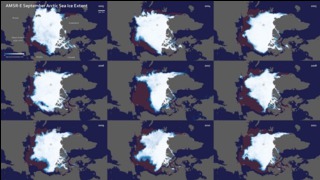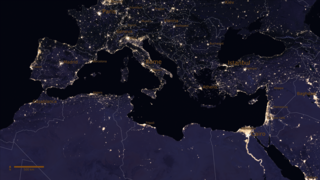Earth
ID: 30768
Satellite-based passive microwave images of sea ice have provided a reliable tool for continuously monitoring changes in the Arctic ice since 1979. During Northern Hemisphere spring and summer months, the Arctic sea ice melts considerably, usually reaching its minimum extent in September, before colder weather begins to cause ice cover to increase during fall and winter months. This series of images shows Arctic sea ice extent for a selection of years using data from AMSR-E and AMSR2. The burgundy area represents the median sea ice extent observed by satellite sensors in September from 1979 to 2000.
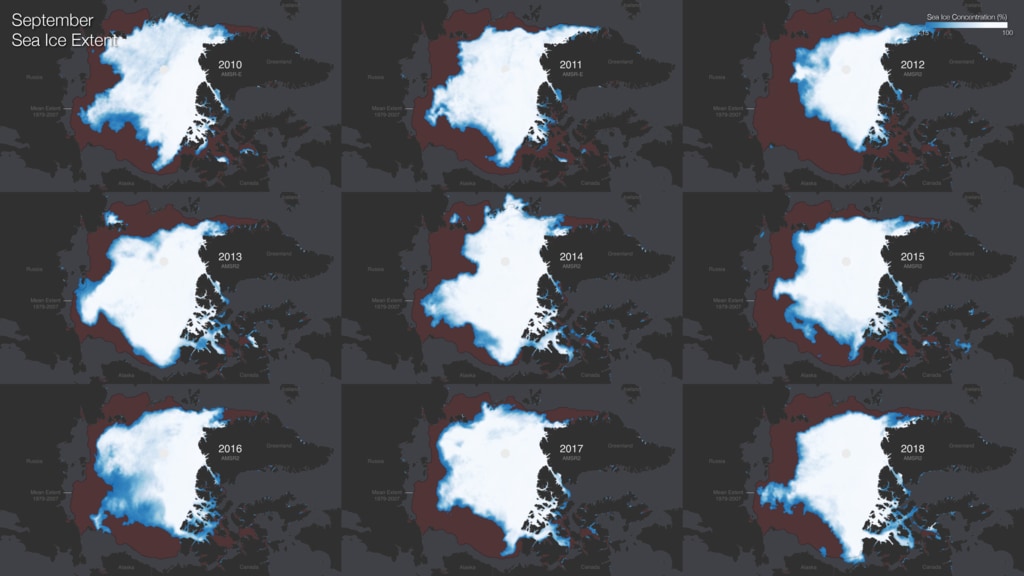
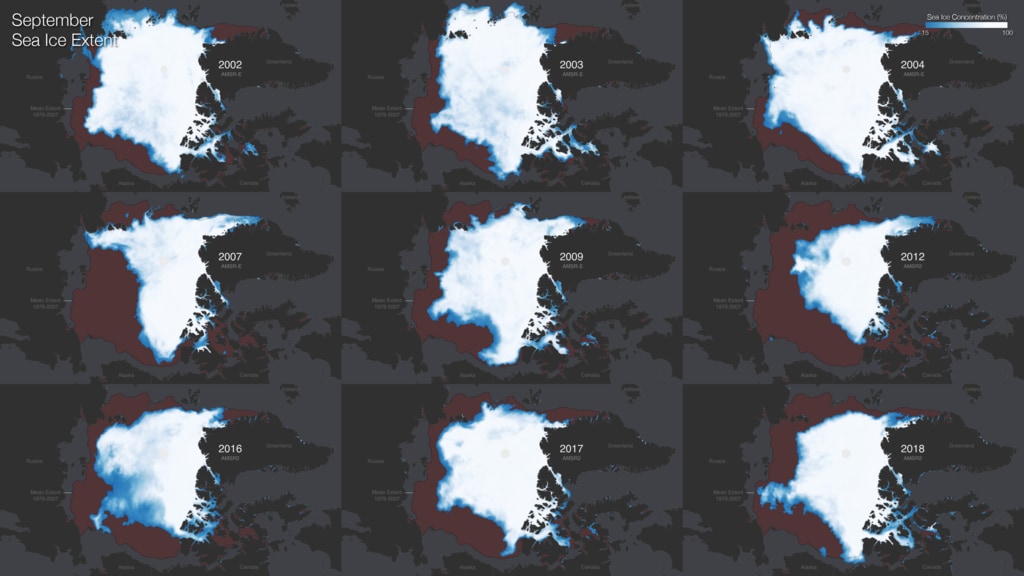
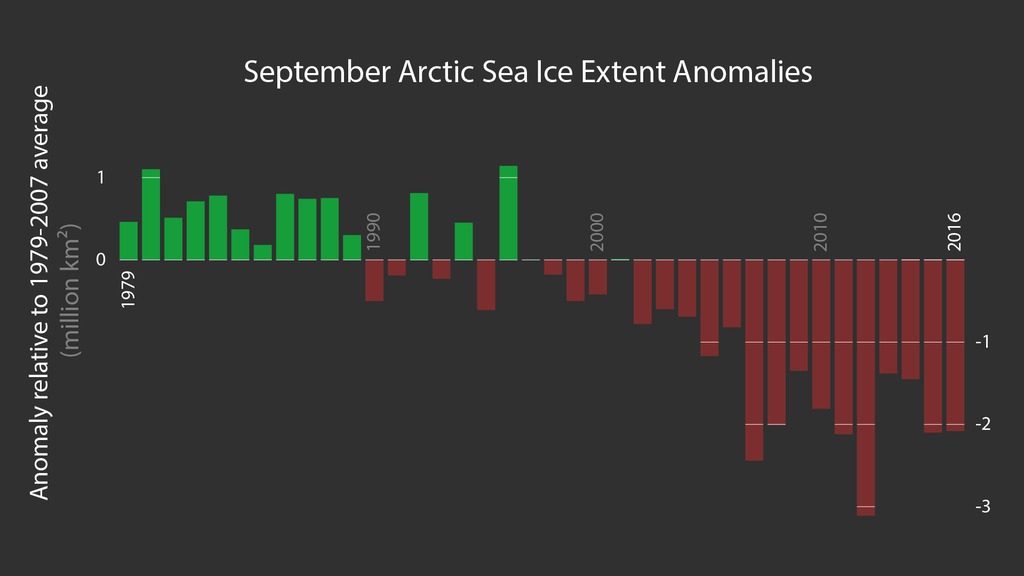
September Arctic Sea Ice
Over the last few decades, the average global temperature has been on the rise—and temperatures in the Arctic have risen at nearly twice the rate as temperatures elsewhere on the planet. As temperatures rise in the Arctic, the extent of sea ice declines. Sea ice is highly reflective of the sun’s energy; therefore, reductions in sea ice impact Earth’s radiation budget. Rather than reflecting most of the sun’s energy, ice-free areas absorb sunlight causing subsequent warming of the ocean.



Older Version
Credits
Marit Jentoft-Nilsen: Lead Visualizer
Please give credit for this item to:
NASA's Goddard Space Flight Center
NASA's Goddard Space Flight Center
Short URL to share this page:
https://svs.gsfc.nasa.gov/30768
Mission:
Aqua
Data Used:
Note: While we identify the data sets used in these visualizations, we do not store any further details nor the data sets themselves on our site.
Keywords:
SVS >> HDTV
SVS >> Sea Ice
GCMD >> Earth Science >> Cryosphere >> Sea Ice
GCMD >> Earth Science >> Cryosphere >> Sea Ice >> Sea Ice Concentration
SVS >> Hyperwall
NASA Science >> Earth
GCMD >> Earth Science >> Climate Indicators >> Cryospheric Indicators >> Sea Ice Concentration
GCMD keywords can be found on the Internet with the following citation: Olsen, L.M., G. Major, K. Shein, J. Scialdone, S. Ritz, T. Stevens, M. Morahan, A. Aleman, R. Vogel, S. Leicester, H. Weir, M. Meaux, S. Grebas, C.Solomon, M. Holland, T. Northcutt, R. A. Restrepo, R. Bilodeau, 2013. NASA/Global Change Master Directory (GCMD) Earth Science Keywords. Version 8.0.0.0.0
https://svs.gsfc.nasa.gov/30768
Mission:
Aqua
Data Used:
Aqua/AMSR-E/Level 3 12.5 km Sea Ice Concentration also referred to as: Sea Ice Concentration
SHIZUKU (GCOM-W1)/AMSR2/10 km Daily Sea Ice Concentration
Observed Data - Japan Aerospace Exploration Agency
Credit:
AMSR2 data courtesy of the Japan Aerospace Exploration Agency (JAXA).
AMSR2 data courtesy of the Japan Aerospace Exploration Agency (JAXA).
Keywords:
SVS >> HDTV
SVS >> Sea Ice
GCMD >> Earth Science >> Cryosphere >> Sea Ice
GCMD >> Earth Science >> Cryosphere >> Sea Ice >> Sea Ice Concentration
SVS >> Hyperwall
NASA Science >> Earth
GCMD >> Earth Science >> Climate Indicators >> Cryospheric Indicators >> Sea Ice Concentration
GCMD keywords can be found on the Internet with the following citation: Olsen, L.M., G. Major, K. Shein, J. Scialdone, S. Ritz, T. Stevens, M. Morahan, A. Aleman, R. Vogel, S. Leicester, H. Weir, M. Meaux, S. Grebas, C.Solomon, M. Holland, T. Northcutt, R. A. Restrepo, R. Bilodeau, 2013. NASA/Global Change Master Directory (GCMD) Earth Science Keywords. Version 8.0.0.0.0
